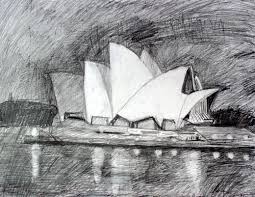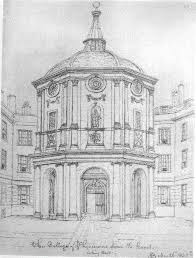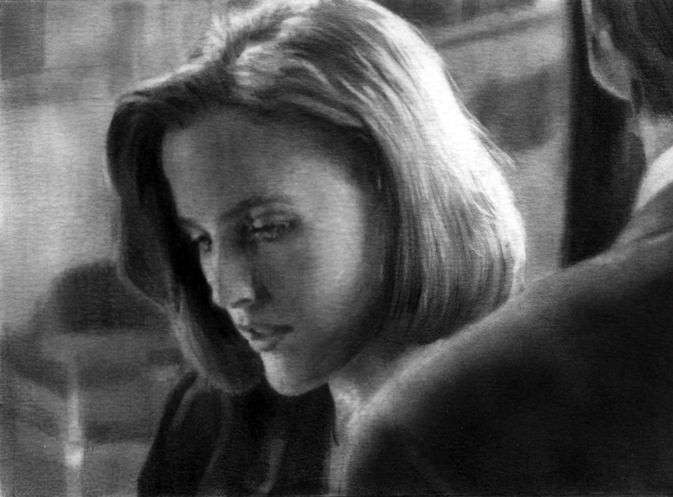Source:Goolge.com.pk
Pencil Drawings Of Houses Biography
Pencil drawings have a beauty and quality of their own. No artist scales great heights withoutpractising pencil drawings or with charcoal sticks.Pencil sketches fascinate us fromchildhood.Regular practice with pencils is essential for an amateur artist and also forcartoonists.
Equipment
Pencil drawing and sketching require the simplest of equipment:have a pencil and a white orlightly colored paper.Have an eraser and pencil sharpener...that is all.Types of Pencils: You can have a range of pencils:Soft ones: B,2B,3B,4B,6B,8B....You dont need all these ,may be B,2B and 4b -three pencilswill do.Hard ones: H,2H and so on.Just H will do for most work.Above all, bulk of the work will be done by the daily #2 or HB pencil.This is a 'compromise'pencil....You can use this one only most of the time and perhaps soft ones to make sweepingstrokes and some shading.You can also use mechanical pencils [0.5 mm or 0.7 mm leads] for quick work.Carry thisalways in your handbag.Used envelopes are great for quick sketches.You may like to know what pencil brands are good for high quality 'professional" pencildrawings....well ,over the years I have tried several brands of graphite pencils: Generals,Prang-Dixon,Steadtler,Fabre-Castell....My favourite has been Steadtler...But the difference betweenthis and other brands may be very small.If other brands are less expensive,go forthem.[Among colored pencils,you have a wide choice.See my article on colored pencil drawingsin Scribd.com]I am a bit of a stickler for good quality erasers.Do not use red,rubber eraser.Use white eraseror better,"ART GUM" eraser or kneaded eraser for smooth erasing.As for pencil sharpener,use simple hand-held one.May be ,you can have a battery operatedelectric one.The choice is yours.Papers: For professional quality drawings,use the papers made byRising,Stonehenge,Strathmore,Bristol, Canson, Fabriano and others.The papers must not yellow,be 'acid-free' and the paper must withstand some rubbing by eraser.Preserve the pictures with a spray of fixatives from art supply stores.There are very thick pencils and also flat pencils used by carpenters or triangular shaped pencilsfor children..If you wish to hold easily for big drawings,try thick ones.Any school supply storehas all these.
Size of drawings:
In the inital stages,draw big ones;give your hand free movement;dont attempt 3in x 4in.....Start with 9inx12 inches or bigger...Your aim should be to capture big,bold areas of darkness and light.Look for big 'masses'...details will come later.If you draw two or three bigobjects to depict ,rest will follow..For instance,draw a big basket with one or two fruits stickingout.
Tonal Values
The biggest advantage of practising pencil drawing is to learn to see and depict tonalvalues [different shades of darkness or greyness] in a picture.This you learn from pencil work,because the aspect of color does not confuse or distract you.While artists make detailed analysis of tonal values, keep it simple.I suggest 5 levels:1First look for really dark regions and draw their contour on the sheet with a thick,B pencil.[saydeep shadows under the eye socket or nose in person standing in bright light or the sun;shadowof chimney on the roof,;dark window,shadow of trunk of a tree;2 Second, look for white or bright regions;draw their contours...Later you will leave themblank...do not touch pencil there.!3 Third: Look for zones of middle values---this is important...There will be several small








Pencil Drawings Of Houses Biography
Pencil drawings have a beauty and quality of their own. No artist scales great heights withoutpractising pencil drawings or with charcoal sticks.Pencil sketches fascinate us fromchildhood.Regular practice with pencils is essential for an amateur artist and also forcartoonists.
Equipment
Pencil drawing and sketching require the simplest of equipment:have a pencil and a white orlightly colored paper.Have an eraser and pencil sharpener...that is all.Types of Pencils: You can have a range of pencils:Soft ones: B,2B,3B,4B,6B,8B....You dont need all these ,may be B,2B and 4b -three pencilswill do.Hard ones: H,2H and so on.Just H will do for most work.Above all, bulk of the work will be done by the daily #2 or HB pencil.This is a 'compromise'pencil....You can use this one only most of the time and perhaps soft ones to make sweepingstrokes and some shading.You can also use mechanical pencils [0.5 mm or 0.7 mm leads] for quick work.Carry thisalways in your handbag.Used envelopes are great for quick sketches.You may like to know what pencil brands are good for high quality 'professional" pencildrawings....well ,over the years I have tried several brands of graphite pencils: Generals,Prang-Dixon,Steadtler,Fabre-Castell....My favourite has been Steadtler...But the difference betweenthis and other brands may be very small.If other brands are less expensive,go forthem.[Among colored pencils,you have a wide choice.See my article on colored pencil drawingsin Scribd.com]I am a bit of a stickler for good quality erasers.Do not use red,rubber eraser.Use white eraseror better,"ART GUM" eraser or kneaded eraser for smooth erasing.As for pencil sharpener,use simple hand-held one.May be ,you can have a battery operatedelectric one.The choice is yours.Papers: For professional quality drawings,use the papers made byRising,Stonehenge,Strathmore,Bristol, Canson, Fabriano and others.The papers must not yellow,be 'acid-free' and the paper must withstand some rubbing by eraser.Preserve the pictures with a spray of fixatives from art supply stores.There are very thick pencils and also flat pencils used by carpenters or triangular shaped pencilsfor children..If you wish to hold easily for big drawings,try thick ones.Any school supply storehas all these.
Size of drawings:
In the inital stages,draw big ones;give your hand free movement;dont attempt 3in x 4in.....Start with 9inx12 inches or bigger...Your aim should be to capture big,bold areas of darkness and light.Look for big 'masses'...details will come later.If you draw two or three bigobjects to depict ,rest will follow..For instance,draw a big basket with one or two fruits stickingout.
Tonal Values
The biggest advantage of practising pencil drawing is to learn to see and depict tonalvalues [different shades of darkness or greyness] in a picture.This you learn from pencil work,because the aspect of color does not confuse or distract you.While artists make detailed analysis of tonal values, keep it simple.I suggest 5 levels:1First look for really dark regions and draw their contour on the sheet with a thick,B pencil.[saydeep shadows under the eye socket or nose in person standing in bright light or the sun;shadowof chimney on the roof,;dark window,shadow of trunk of a tree;2 Second, look for white or bright regions;draw their contours...Later you will leave themblank...do not touch pencil there.!3 Third: Look for zones of middle values---this is important...There will be several small
Pencil Drawings Of Houses
Pencil Drawings Of Houses
Pencil Drawings Of Houses
Pencil Drawings Of Houses
Pencil Drawings Of Houses
Pencil Drawings Of Houses
Pencil Drawings Of Houses
Pencil Drawings Of Houses
Pencil Drawings Of Houses
Pencil Drawing House Animation
Drawing A House


